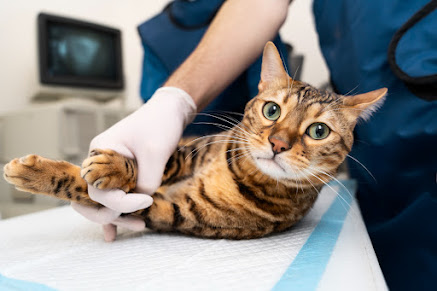How Many Toes Does Your Cat Really Have?
Cats, those enigmatic and graceful creatures that have captivated humans for centuries, are known for their agility, independence, and of course, their adorable paws. When it comes to cats' paws, one interesting aspect that often piques curiosity is the number of toes they possess. Unlike humans, who typically have five toes on each foot, cats have a varying number of toes, depending on their genetic makeup and certain breed-specific characteristics. So, how many toes does a cat have? Let's delve into the fascinating world of feline anatomy and find out!
To begin with, the average domestic cat typically has a total of 18 toes, distributed across its four paws. This number might seem odd at first, as it is more than double the number of toes humans possess. However, cats have evolved to have a unique foot structure that grants them exceptional balance and agility, enabling them to perform acrobatic feats and navigate various terrains with ease.
Most cats have five toes on their front paws and four toes on their back paws. These five-toed front paws are often referred to as "hands" due to their resemblance to human hands, complete with opposable thumbs. These "thumbs," or dewclaws, are set slightly higher on the leg than the other toes and are considered vestigial digits, meaning they have lost their original purpose through evolution. Some cats may even have double dewclaws on their front paws, adding an extra touch of uniqueness to their paw structure.
On the hind paws, cats usually have four toes. However, there are certain breeds known as polydactyl cats that possess extra toes, a condition known as polydactyly. Polydactyl cats can have up to seven toes on their front paws, resembling a miniature feline version of a catcher's mitt. This genetic anomaly occurs sporadically, and the number of extra toes can vary from cat to cat, making each polydactyl feline truly one of a kind. Polydactyl cats are often celebrated for their charming and whimsical appearance, with their extra toes adding to their overall charm.
The occurrence of polydactyly in cats is believed to be a result of a genetic mutation. While the exact cause of this mutation is not yet fully understood, it is generally considered a harmless condition that does not affect a cat's overall health or well-being. In fact, many polydactyl cats thrive just as much as their counterparts with regular toe numbers, and their extra toes can even provide them with an advantage in certain situations, such as climbing or catching prey.
Historically, polydactyl cats have been particularly prevalent in certain regions, with stories of their existence dating back centuries. One notable place associated with polydactyl cats is the coastal town of Ernest Hemingway's Key West, Florida. Hemingway, an acclaimed American writer, was a renowned lover of cats, and his former residence on the island is now a museum that houses numerous polydactyl felines, affectionately referred to as "Hemingway cats." These cats, descendants of Hemingway's original pets, continue to draw visitors from around the world, showcasing the unique and endearing nature of polydactyl cats.
Beyond the number of toes, a cat's paws serve multiple functions. Cats' paws are equipped with soft pads on the underside, which provide cushioning while walking and running, allowing them to move silently and with precision. These pads also help with traction, enabling cats to climb trees or jump effortlessly. Additionally, the paws contain scent glands, which allow cats to mark their territory by leaving their scent on surfaces they come into contact with.
In conclusion, the number of toes a cat has can vary depending on the individual and its breed. While most cats have 18 toes, with five on their front paws and four on their back paws, there are fascinating exceptions to this rule, such as polydactyl cats, who can sport extra toes. Regardless of their toe count, cats' paws are marvels of nature, perfectly designed to support their incredible agility, balance, and hunting prowess. So, the next time you find yourself admiring a cat's paws, take a moment to appreciate the intricacies and unique characteristics that make them so special.






